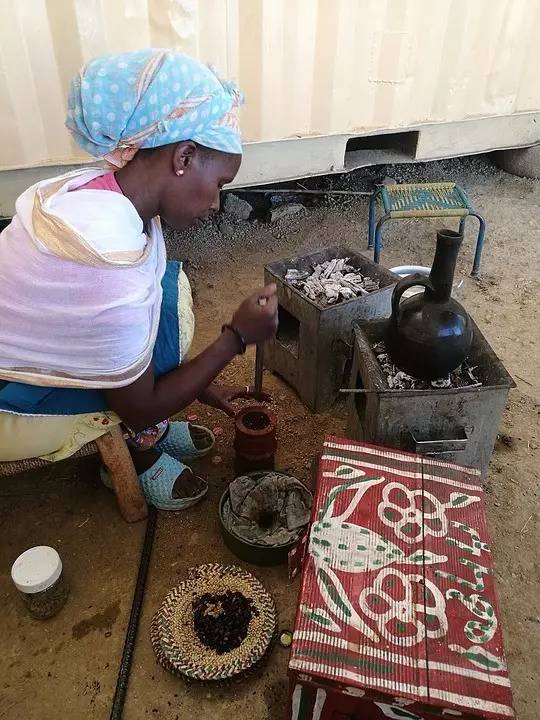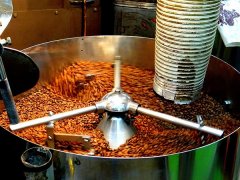Barista must know the chronicles of coffee! Coffee History Review
How do classes create coffee? Why would you do that? How did we get this far in coffee competitions around the world and an industry that exports 30 billion dollars a year?
In addition, how did the first, second, third or even fourth wave of coffee come from?
If you have ever thought about these questions, please be prepared. Lao WA will lead you to a brief understanding of the very short history of coffee consumption since the 14th century.
Coffee and cake
Traditional coffee consumption: guest etiquette and politics
It is difficult to trace the exact time of the first coffee consumption. It may appear somewhere in Africa and the Middle East, or it may be used as a drug or stimulant. What Laowa can be sure, however, is that in the 14th century, people in the Sufi monastery began to enjoy coffee.
In the Middle East, coffee appears in family ceremonies, either for entertaining important guests, or for family meetings and negotiations. And has been in use to this day.
During the Ottoman Empire, coffee began to be sold on the market and favored in the court. And then the cafe appeared.
As coffee spread to Europe and further developed around the world through European imperialism, the relationship between coffee and politics, male social circles and liberal thought became stronger.
From Sweden to Colombia, the ruling class began to worry that drinking was just a cover for inciting political and social unrest. Religious leaders also see cafes as places for dangerous ideas. In 1702, Salem ministers mocked "intellectuals in cafes" and suspected that witchcraft might exist.
Back in the 19th century, coffee culture began to resemble modern coffee consumption.
A woman makes coffee in the traditional Ethiopian way.

The first wave of coffee and commercialization
The first wave of coffee is becoming more and more available.
Coffee used to be an upper-class drink, mainly serving members of the royal family and intellectuals, but the first wave of coffee brought it into the kitchen.
In the 19th century, Folger and Maxwell House opened stores. Instant coffee and mocha pots also appeared during this period.
Then, at the beginning of the 20th century, coffee machines appeared. Soon after, Nescafe and freeze-dried instant coffee also began to appear. Although fast food technology already exists, freeze-drying technology enables it to remain in use for a longer time, making it easier and cheaper to transport over long distances.
More importantly, American soldiers stationed abroad have helped instant coffee consumption become more popular in countries like South Korea.
Use the mocha pot invented in 1933 to make coffee

The second wave of coffee and specialty consumption
The second wave is marked by a growing focus on coffee quality and professional experience.
Starbucks was founded in 1971, Erna Knutsen used the phrase "professional coffee" in tea and coffee trade magazines in 1974, and the American Fine Coffee Association (SCAA) was founded in 1982.
Of course, this is also inseparable from the carefully coined Juan Valdes of the International Coffee Association of Colombia. Juan Valdes, who first appeared in the late 1950s, frequently appeared in ads marketing 100% Colombian coffee, telling everyone that good coffee tastes better.
Starbucks Mermaid Light Box

The third Wave of Coffee and Origin stories
However, as a coffee producer, Juan Valdez not only influenced the second wave of coffee, but also heralded the eventual arrival of the third wave of coffee.
Until 2002, Trish Rothgeb announced the arrival of the third wave of boutique coffee.
The focus of the third wave of coffee is the story behind coffee. Including coffee varieties, producing countries, soil and water climate, processing methods, baking methods, brewing methods and so on. Consumers are beginning to realize that all this will affect the final taste of coffee. On some coffee farms, experimental treatments have also emerged in an attempt to cater to a more picky new type of consumers, such as Lao WA.
More importantly, coffee is beginning to be competitive. The Best Panama and Excellence Cup appeared in the late 1990s, while the first World Barista Championships were held in 2000. In 2004, Panamanian geisha sold at auction for $21 a pound, which later rose to $350.25 a pound.
Coffee farmers pick coffee beans by hand
Is there a fourth wave?
The word "fourth wave" has caused controversy: some people think that it does not exist outside the market. Others believe that this can be used to show that people are more likely to use technology and science in the coffee brewing process.
However, most people now think that we are still in the third wave of coffee.
So,
This is the short history of coffee over the past 600 years.
Important Notice :
前街咖啡 FrontStreet Coffee has moved to new addredd:
FrontStreet Coffee Address: 315,Donghua East Road,GuangZhou
Tel:020 38364473
- Prev

Drinking coffee to prevent Alzheimer's disease can reduce the risk of Alzheimer's disease
More and more scientific studies have found that long-term and regular drinking of coffee can effectively prevent Alzheimer's disease. At the video conference of this year's annual European academic conference on Alzheimer's disease (Alzheimer's disease), authoritative scholars from Europe summarized and elaborated on the findings. The above-mentioned research report comes from this meeting. According to the report, food
- Next

Coffee Culture in Japan-- the History of hand-made Coffee and Cafe
Exchange of professional baristas Please follow the Coffee Workshop (Wechat official account cafe_style) when in Tokyo, I like to stop in different corners of the city and sit in the coffee shop around the street for a while, such as gallery to Genzu in Nanqingshan, Dafang cafe that comes out of the subway station, and Caf de Lambre when shopping in Ginza. The pace of life is extreme.
Related
- How did the Salvadoran coffee industry develop in Central America?
- What exactly does the golden cup extraction of coffee mean?
- The Origin of Coffee flower
- [2023 Starbucks World Earth Day] there are more meaningful things besides free Starbucks coffee!
- What kind of coffee is there in Spain? 9 Flavors of Spanish Coffee
- Aromatic African coffee| Kenya's coffee culture and historical production area
- Liberica Coffee Bean knowledge: the characteristics of Liberian Coffee beans of the three original species of Coffee beans
- The origin and formula of Spanish latte introduces the taste characteristics of Bombon coffee in Valencia, Spain.
- How to adjust the solution of over-extracted coffee
- What is the tasting period of coffee beans? What is the period of coffee and beans? How should coffee wake up and raise beans?

